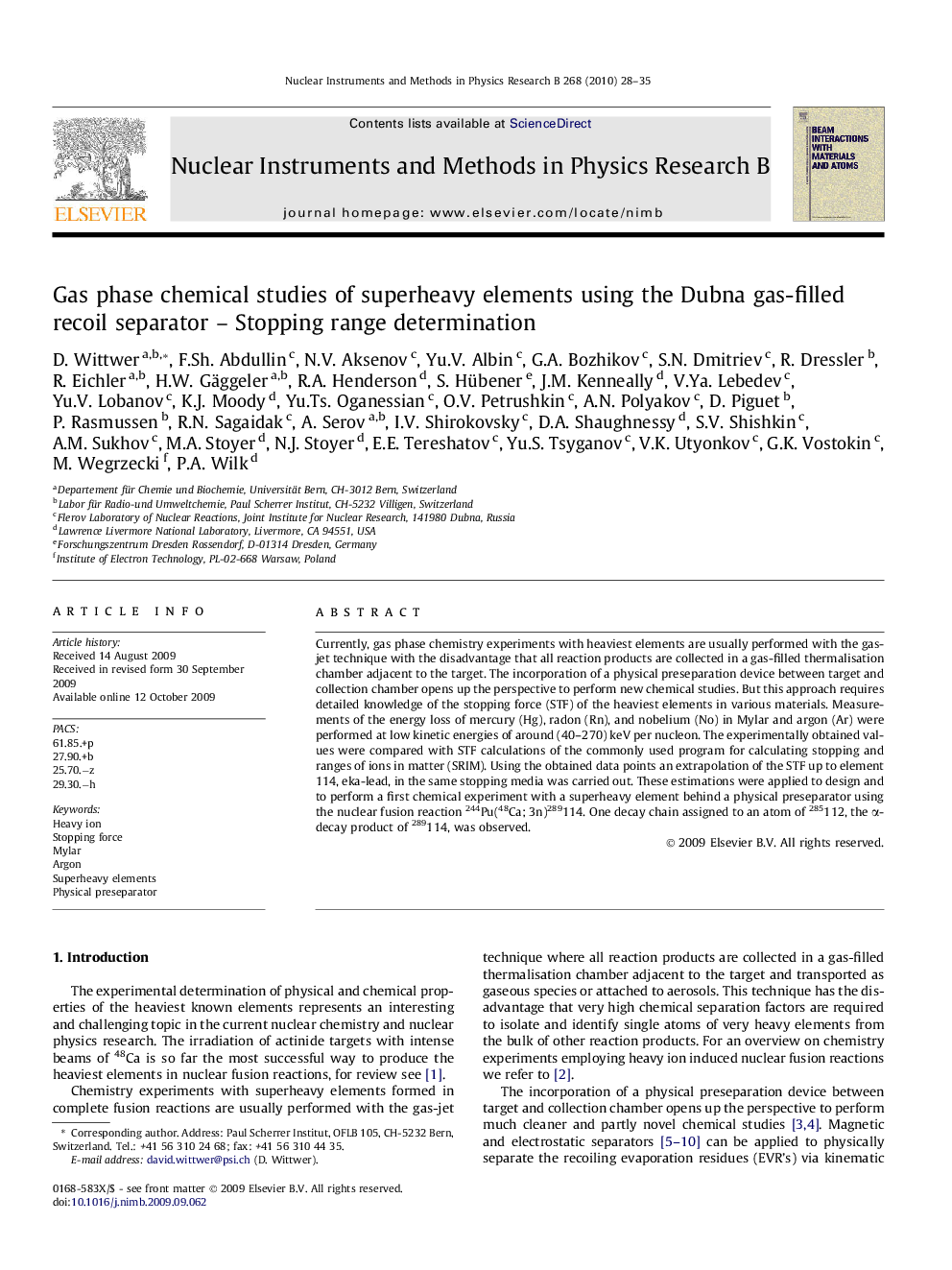| Article ID | Journal | Published Year | Pages | File Type |
|---|---|---|---|---|
| 1683677 | Nuclear Instruments and Methods in Physics Research Section B: Beam Interactions with Materials and Atoms | 2010 | 8 Pages |
Currently, gas phase chemistry experiments with heaviest elements are usually performed with the gas-jet technique with the disadvantage that all reaction products are collected in a gas-filled thermalisation chamber adjacent to the target. The incorporation of a physical preseparation device between target and collection chamber opens up the perspective to perform new chemical studies. But this approach requires detailed knowledge of the stopping force (STF) of the heaviest elements in various materials. Measurements of the energy loss of mercury (Hg), radon (Rn), and nobelium (No) in Mylar and argon (Ar) were performed at low kinetic energies of around (40–270) keV per nucleon. The experimentally obtained values were compared with STF calculations of the commonly used program for calculating stopping and ranges of ions in matter (SRIM). Using the obtained data points an extrapolation of the STF up to element 114, eka-lead, in the same stopping media was carried out. These estimations were applied to design and to perform a first chemical experiment with a superheavy element behind a physical preseparator using the nuclear fusion reaction 244Pu(48Ca; 3n)289114. One decay chain assigned to an atom of 285112, the α-decay product of 289114, was observed.
